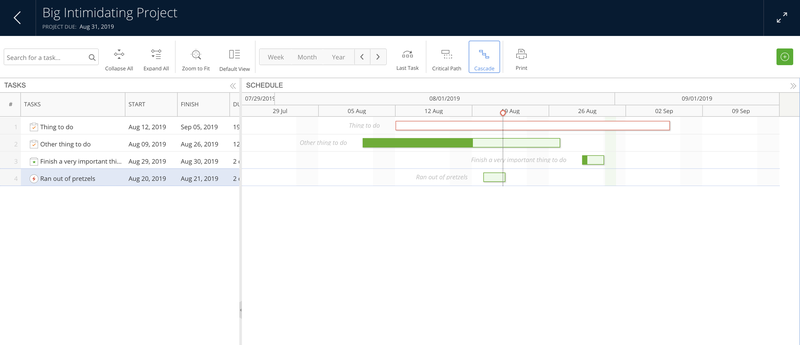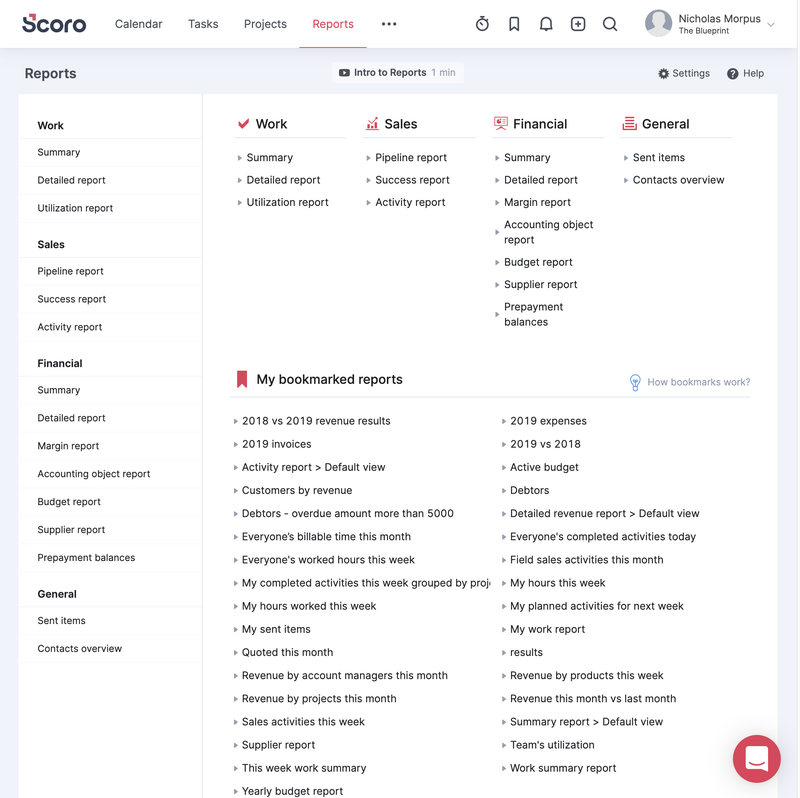

Image source: Getty Images
Learning the fundamentals of procurement management will help project managers carry out procurement activities effectively and achieve deliverables efficiently for maximum cost-efficiency and value.
Implementing smart procurement practices is crucial to the success of a project.
While there are several things involved in project planning and management, properly managing all procurement activities will help project managers save time and resources.
Plus, it helps the project teams establish project risk management measures.
When done right, setting up a project procurement management system will not only aid businesses in avoiding costly errors and delays to a project, but it also helps ensure the proper acquisition of all items and services to run projects efficiently.
Overview: What is procurement management?
Procurement management is a strategic approach to manage and optimize your project spending. It’s applied across the entire project spectrum, from goods and services acquisition to sourcing, requisitions, orders, expediting, inspection, reconciliation, and more.
This makes it a crucial aspect of the project management steps to help ensure seamless operations and functions and meet the project schedule.
It’s important to remember that a single failure in the procurement process can disrupt production, negatively impact the company’s bottom line, and delay, or even halt, the entire project implementation.
To help project management teams maximize their efforts and reduce risks, they’ll need to integrate all procurement functions, monitor purchases, control spending, and set up a reliable procurement management system.
Translating all of these factors into a procurement management plan will identify the acquisition needs for project procurement to help achieve deliverables.
Plus, a procurement management plan will systemize how all the procurement process stages will operate throughout the entire project.
What to consider when developing a procurement management plan
The procurement management plan will depend on the size and scope of the project. However, project management teams can consider general factors when crafting their procurement management plan.
1. Roles and responsibilities
Many important roles and responsibilities are required to run the procurement process smoothly. Project managers, especially, have the important role of overseeing the project budget, schedules, risks, managing the contractors’ technical requirements, and many more.
It’s crucial to define the specific roles and responsibilities, specify authority boundaries for different parties, and avoid overlapping functions.
2. Estimating
In most cases, project management teams will need to produce an estimate before the project bidding to make sure the budget allows for the procurement activities.
For instance, project managers can conduct net present value analysis and different capital budgeting techniques to assess the time value of money and ensure adequate accountability for the cost of capital.
If project returns are non-tangible, project managers can conduct a cost benefit analysis to produce the estimate for the procurement management plan.
3. Project scheduling
Vendors, contractors, service providers, and suppliers can often affect the project schedule, so it’s crucial that project managers define the tasks that each contractor will perform.
To do so, project managers must produce a statement of work (SOW) or a terms of reference (TOR) describing the work requirements for contractors. They will base their pricing and schedule on this document.
Doing so allows project managers to manage the schedule and pricing within the task structure better, which helps avoid micromanaging, which can result in difficult contractor relationships.
Additionally, including scheduling in the procurement management plan will help project managers identify schedule implications, assumptions, and constraints that will affect the procurement process.
4. Vendor control
Working with vendors means that project managers and their teams give up those portions of the project performed by contractors.
This makes vendor control policies vital to the procurement management plan to ensure that the work of suppliers, service providers, contractors, and more will meet the project needs.
Sharing the project management team’s vision statement with contractors is also helpful in setting expectations in vendor relationships.
All vendor control policies, such as site inspections and regular project meetings, should be included in the procurement management plan and the SOW or TOR.
5. Legal jurisdiction
Project managers should establish proper legal jurisdiction in the procurement management plan to address any potential legal issues upfront. This allows project managers to initially address the minimum legal requirements of the project and translate them into contract documents.
Furthermore, this ensures that all stakeholders are aware of the stipulations of the contract from the get-go and help avoid potential legal issues throughout the run of the project.
How to create a procurement management plan
Now that we have a better idea of the necessary components, let’s take a look at some of the steps project managers undertake to create their procurement management plan.
Step 1: Outline the procurement terms
Project management teams need to outline the items and services for procurement in specific terms, including sizes, the benefits they will provide, the justification, etc.
For example, to justify the acquisition, the items need to address issues like whether or not the goods are required for manufacturing things that are necessary to complete the project.
This stage in the procurement management planning should also include any technical information vital to the procurement process.
Additionally, project managers must detail the date the items are required, based on the need and use dictated by the timeline. They must also list who has purchase approval.
Maximizing the outlining of the procurement terms:
- Use templates. Templates allow project management teams to easily and quickly outline and detail the procurement terms and share them with the team and suppliers.
- Use tools with automated approval workflow capabilities. To avoid the lengthy back and forth approval and purchase process, project management teams can use automation software to streamline the request handling and approval management process.
Step 2: Determine the type of agreement
A contract signifies the agreement between a vendor and the project management team, project sponsor, or a company that defines handling of the costs. However, there are various types of contracts like cost reimbursement and fixed price which are broad contract categories.
Project managers will need to specify the type of contract in the procurement management plan to outline the cost specifics, including the materials costs, billing rates, and any additional fees.
This step in the procurement management plan should also specify the contract management details such as e-signature requirements, contract management platform processes, etc.
Maximizing the determination of agreement type:
- Use contract management platforms. Remove the complexity of contract management by using platforms that allow seamless retrieval and organization of critical documents. This would let project management teams exercise due diligence at all times.
- Work with tools that offer electronic signature functionalities. Using e-signature services that provide the same legal validity as traditionally signed documents helps expedite the contract approval workflow process, saving time, effort, and money.
Step 3: Identify and mitigate risks
Identifying and mitigating risks will always be part of project management best practices, especially in the procurement management plan.
After all, most projects carry risks that could impact the schedule or completion date, which is why project managers need to determine those that affect the procurement process.
Risks can include factors like potential shipping delays, vendor conflicts, unrealistic cost expectations, and things like a contractor’s inability to perform up to standards and meet deadlines which can affect project quality management.
To help ensure success, project managers must include risk mitigation measures in the procurement plan. For instance, project management teams must identify potential replacement contractors should the chosen subcontractor fail to complete the project task.
Maximizing identification and mitigation of risks:
- Create a risk register. A risk register contains a library of the identified risks and mitigation measures to prevent or reduce their impact, allowing for better monitoring and response to potential risks in the procurement process.
- Use the right tools for managing the supply chain. Using software procurement solutions, for instance, allows automated vendor evaluation and management and tracking of contractor issues and performances.
This can lower the project’s risk exposure to false invoices and other potentially fraudulent vendor activities.
Step 4: Cost determination
Project management teams outline the process to determine all the costs associated with the project in the procurement management plan.
Most procurements will involve a request for proposal (RFP) that outlines the procurement needs and invites vendors to provide bids.
Bids will generally include the vendors’ products or services outline, how they will carry out the job, their experience with the specific type of work, a cost outline, and schedules.
Project management teams must make the exact requirements in the initial RFP clear to help make the project cost estimation as accurate as possible.
Maximizing cost determination:
- Work with cost analytics software. Tools like this help project management teams quickly and accurately estimate costs throughout the project procurement phases.
- Use the right project cost estimation technique. Project management teams must use the cost estimation technique that gives the most accurate results. Otherwise, they could go over or under budget.
The best project management tools for procurement management
Managers and teams must ensure efficiency throughout the procurement process and the project’s lifecycle. It is crucial that they use the best project management software.
Here are some of the best project management tools that can help with procurement management.
1. Podio
Podio offers customization functionalities based on the project management needs, including custom webforms, reports, workflows, budgeting, and Google Apps integrations.
Aside from customizable options, the tool offers useful features like task management and planning, documentation, etc.

This is a sample task within Podio. Image source: Author
For instance, users can easily create new tasks within the platform, assign it to team members, add details, set a schedule, and communicate with the assignee via the comment section.
Project management teams can make the most of the tool’s features to collaborate better and create custom functions to help manage procurement tasks more efficiently.
2. Mavenlink
Mavenlink offers a wide array of features that help project management teams prioritize, schedule, and track tasks. It also presents a centralized file storage area in each project, team dashboard, etc.
This tool is easy to navigate and offers a Gantt chart feature that allows users to view tasks in that format, create new ones, and add details without needing to return to the main task manager.

Mavenlink lets you view tasks in the Gantt chart format. Image source: Author
Aside from other features like resource management functions, file sharing, team dashboards, and time tracking, the tool also offers budget reports.
With this, project management teams can track, measure, and forecast billing, invoicing, and expenses, which can help streamline procurement processes.
3. Scoro
Scoro offers many collaboration features for project management teams, such as a detailed dashboard with a task and projects list, time tracking, and a shared team calendar.
This tool stands out from other project management software because of its reports feature.
Users can easily create and render various project reports by choosing from pre-made types, such as financial and sales reports, work summaries, etc.

Users can create a wide variety of reports within Scoro Image source: Author
.
Additionally, Scoro offers a wide array of financial widgets that can track expenses, revenue, project income, and budgets, which are all useful in the procurement management process.
The importance of procurement management
Establishing an excellent procurement process and system is essential for the success of the project because it helps project management teams meet specific goals and stakeholder expectations at the same time.
With proper and smart procurement management, project managers can avoid potentially costly downtimes, and they can ensure that the project meets its deadlines.